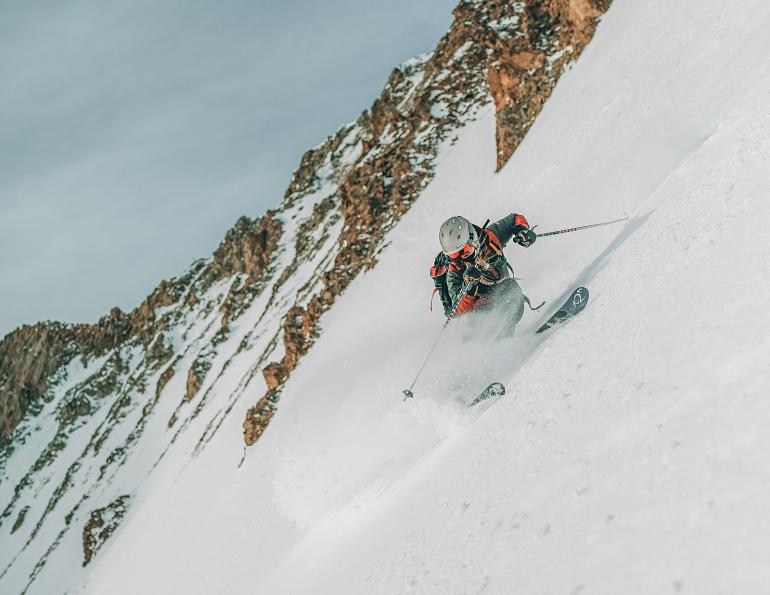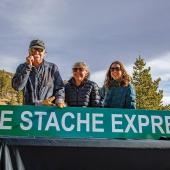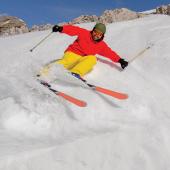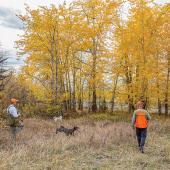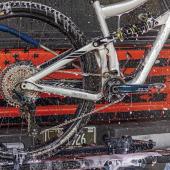Rip Like a Racer
Perfecting the short-radius turn.
Skiers who can carve a short-radius arc on a steep groomer can ski anything with elegance: chutes, pow, frontside, and crud. And no one slices more perfect turns than the slalom racers on the World Cup—the guys and gals that the youth and masters racers at Bridger and Big Sky are seeking to emulate. Looking to up your own performance on the piste? Here are the technical elements of a slalom turn that are critical to perfect turns on any terrain.
Outside Ski to Outside Ski
With the exception of skiing in very soft snow, a skier’s grip against the terrain takes place on the outside ski in a turn (i.e., the ski which is tipped onto its inside edge). If the upper body leans into the turn, or if the stance is too wide or too narrow (aim for shoulder-width), there will be insufficient pressure against the outer ski to hold the turn. Even in powder, the experts are primarily oriented toward the outside ski, but may shift just enough weight to the inside board for better flotation.
How the skier is oriented fore and aft over the skis largely determines how much pressure can be exerted on the tongue of the boot.
You can get a sense of the proper balance and movement by jumping from side to side, leaping from your outside leg to land on the opposite leg in a balanced position. On the landing, keep your inside leg from touching the floor. This is a good conditioning exercise, but also mimicks the active un-weighting of the outside ski required to keep ahead of the terrain on the steeps.
Forward Pressure
Forward pressure exerted by the skier against the skis is critical to getting the edges to bite early in the turn and carve in the snow. Racers are ever seeking to keep their shins engaged with the tongue of the boot. It’s downward and forward pressure against the front of the boot that transfers pressure to the tip of the ski. Early tip pressure is critical to carving, especially on steep slopes and in hard snow.
The “pole plant,” or the act of moving the pole forward with the initiation of the new turn, is important for a couple of reasons.
How the skier is oriented fore and aft over the skis largely determines how much pressure can be exerted on the tongue of the boot. The most common problem is skiing with the hips behind the bindings. The racer ideal is to maintain a “stacked” position over the bindings, meaning that the ankles, hips, and shoulders are vertically aligned.
Pole Use
The “pole plant,” or the act of moving the pole forward with the initiation of the new turn, is important for a couple of reasons. For racers, it cues the timing and a forward movement into the new turn with the core. A pole plant tied to a slightly upward and down-the-slope movement with the belly button facilitates the aggressive, forward orientation required to initiate the turn on the steeps—no matter the terrain or snow conditions.
Racers work tirelessly to perfect their short-radius turns. Follow their lead and you can ski anywhere.
Jack Ballard coaches masters ski racing at Big Sky, Red Lodge Mountain, and camps across the country from New York to Colorado.

